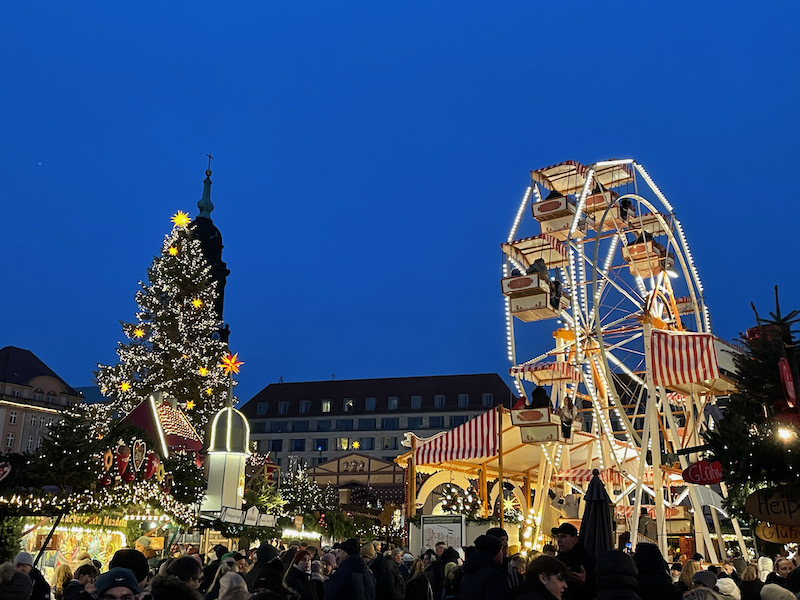Our Blog - Day 1 - Dresden, Germany
One of the things that was discussed quite a bit in the various tours that we took during the visit was the Bombing of Dresden, that took place the 13th and 15th of February, 1945. It was a joint campaign with the US and the UK dropping more than 390 tons of high-explosive bombs and incendiary devices. You will hear a lot about the "reconstruction" in the 1950's, after WWII. After the war, there were lots of discussions about whether or not the bombings were "justified", since there weren't that many factories here. But the Allies justified the bombings because of the major rail transport there, along with some factories. But critics argued that the communications infrastructure and industrial areas that were located outside of the city center weren't targeted. Some claim that the raid was, in fact, a war crime, since Dresden was a cultural landmark with little strategic significance. During a guided tour, the tour guide talked about how the first bombs, the high-explosive bombs, were dropped first, and they made holes in the ceilings and blew out all of the windows. Then when the incendiary bombs were dropped, the now-open windows provided lots of air and so it created a fireball that ravaged the city. People who had hidden in their basements were trapped by the fires above. I don't know how true that is, but it definitely is a talking point on tours.
There are multiple different markets for Christmas across the old town, and we started at the Finn Village. They had a similar one in Strasbourg when we went to the Christmas market there. They had various stalls with Finnish food and things to buy. We stopped by after checking into the hotel to get a smoked salmon sandwich for lunch. I have no idea what exactly this was, but it seems that there were a set of people in "period clothes" ... perhaps they were Hessians?
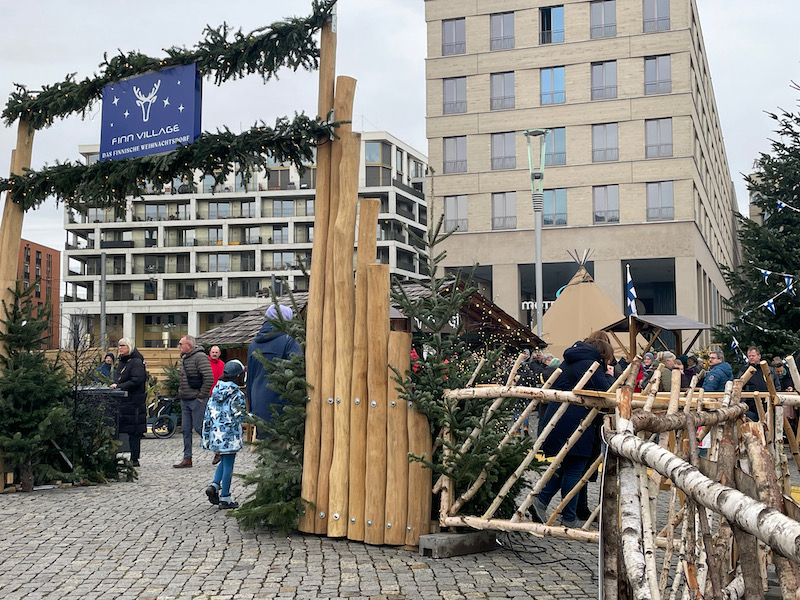
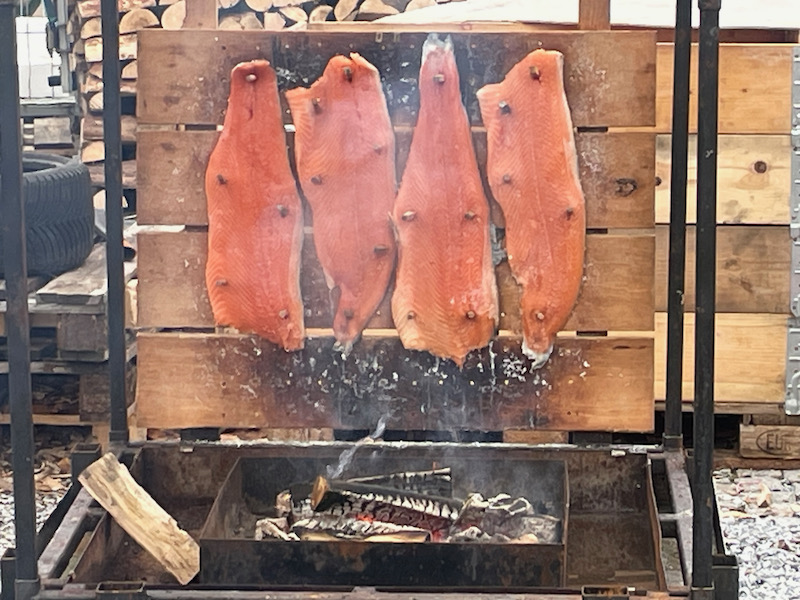
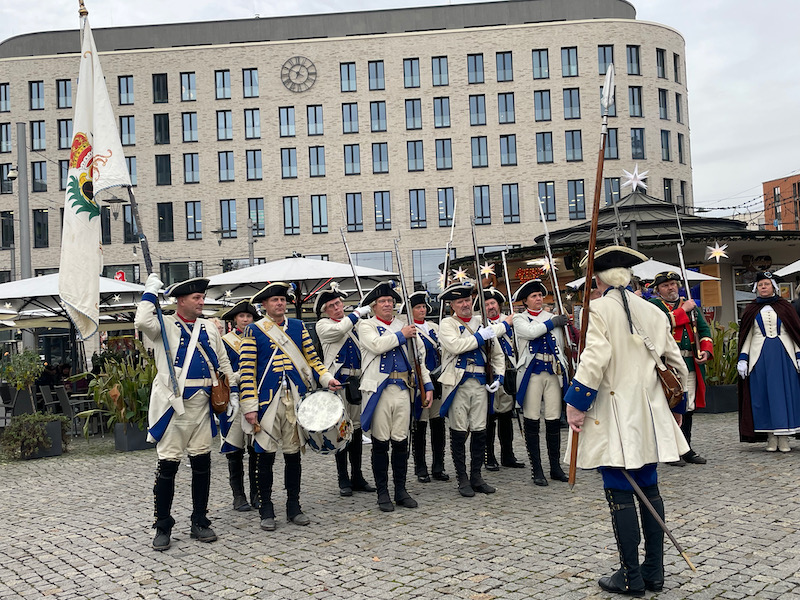
We started our walking tours in the "Neustadt" or New Town. Across the Elbe River from the historical center, it is still quite an old district and is considered part of "Old Dresden" that was inside the city walls. It seems like it was more of a residential district for the wealthy by the 16th century, with nice Baroque townhouses built when the New Town was remodeled around 1730. There aren't that many historical buildings there, however, so the tour wasn't too long.
Probably the most important figure in Dresden history was the Elector (these "selected" individuals were the ones who voted to choose the Holy Roman Emperor) and Augustus II "the Strong". When he took over from his father, the Holy Roman Empire had been split by the Protestant Reformation (led by Martin Luther) with Dresden being in the Protestant part. But he wanted more than just being the head of Saxony, he wanted to be a King. He converted to Catholicism and, when the Polish King John III Sobieski died in 1697, he won the election as King of the Polish–Lithuanian Commonwealth. His wife remained a staunch Protestant, living outside of Dresden after he became King. In the Neustädter Markt square, there is an equestrian statue called the Goldener Reiter, showing Augustus II dressed as a Roman emperor.
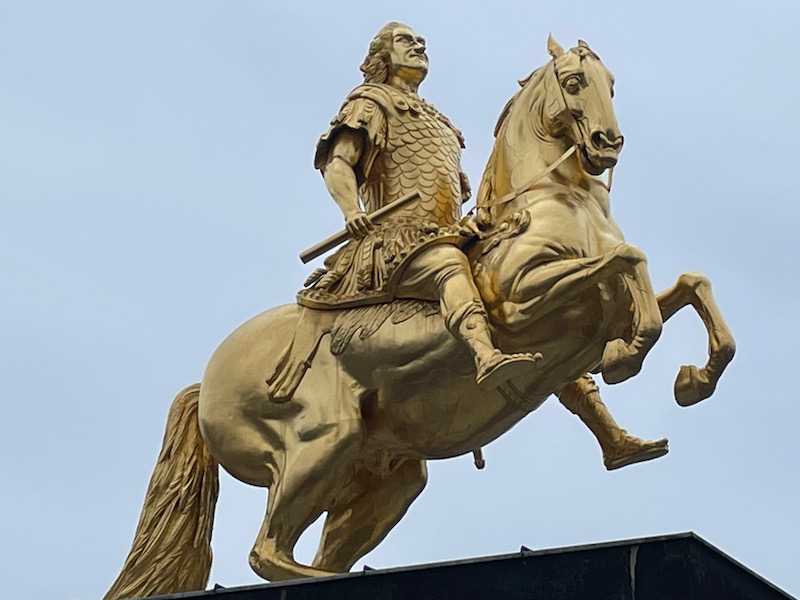
Also in the same square are 2 sandstone nymph fountains, crafted between 1738 and 1742. Each fountain presents a nymph surrounded by mythical creatures, with fish mouths that serve as water dispensers. I thought it was a bit interesting that some things (like the statue) were bright, shiny, and clean ... while other things (like the fountain) seemed to be a bit dirty.
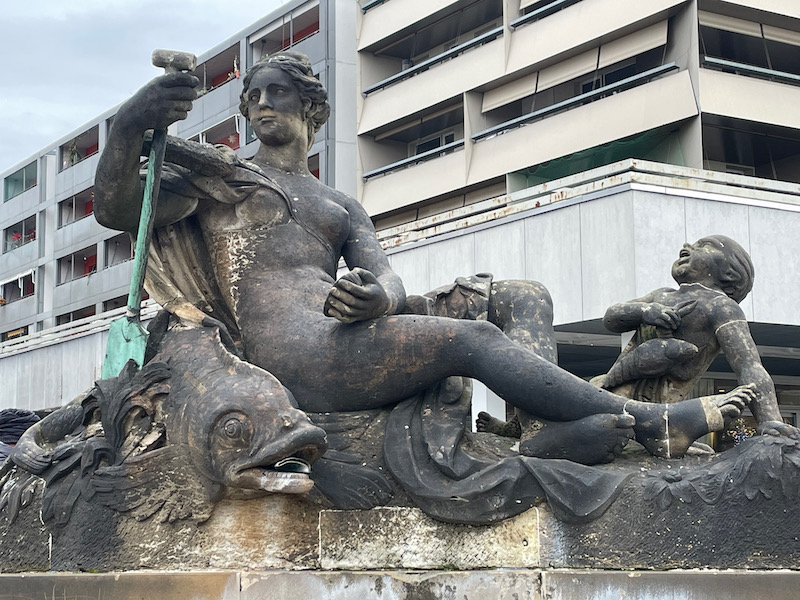
The Neustädter Markthalle (New Town Market Hall) was built in 1899. Primarily of sandstone blocks, the hall features a large, glass skylight that floods the interior with natural light. There are wrought-iron railings, ornate iron staircases, and elegant lamps. Like with most things that you will see in the blog, it was severely damaged in WWII and rebuilt shortly after. It looks quite clean inside due to a major renovation from 1997 to 2000. It seemed filled with lots of little shops with household items and clothes rather than a food market. And again, for me, the outside seemed a bit dirtier than I would have expected being renovated semi-recently.
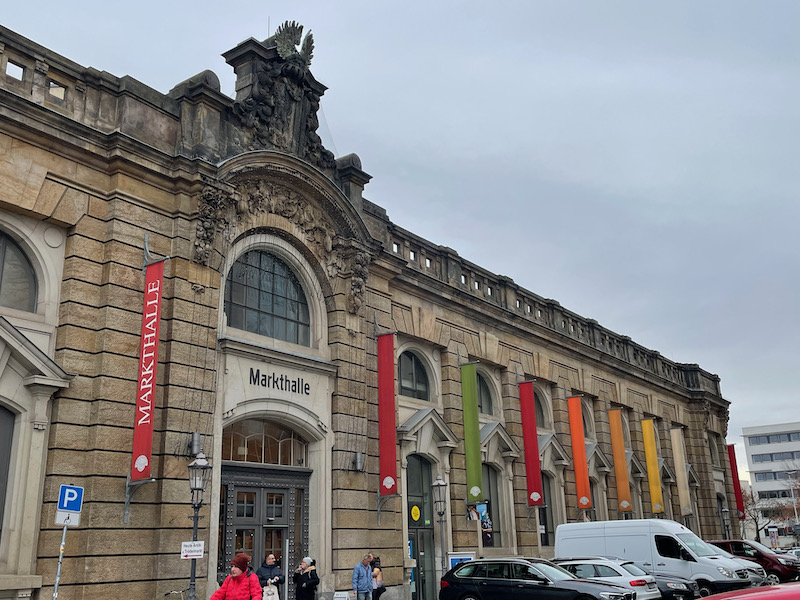
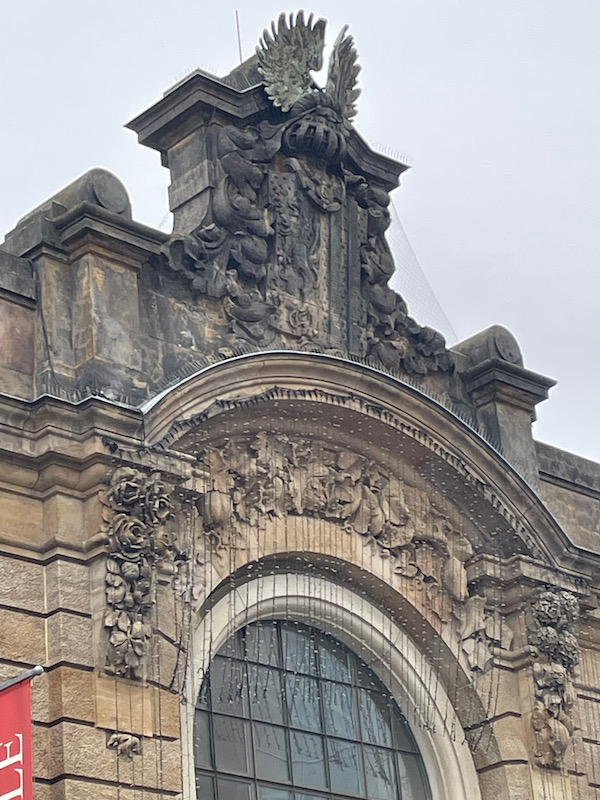
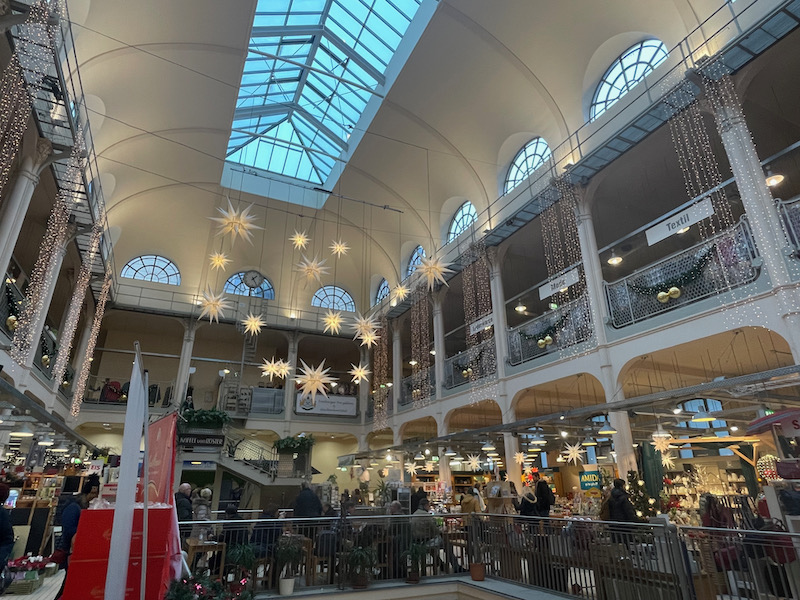
This was a little bit of the beaten path but we decided to head over to Pfunds Molkerei (Pfund’s Dairy Shop). This decorative 19th-century shop has been a Dresden institution since 1880, and offers a wide assortment of cheese and other goods. The shop is known for its tile mosaics on the floor, walls, and counters, and the over-the-top ceiling. A bit of trivia: Pfund’s is also famous for introducing pasteurized milk to the industry; it invented milk soap and specially treated milk for infants as early as 1900.
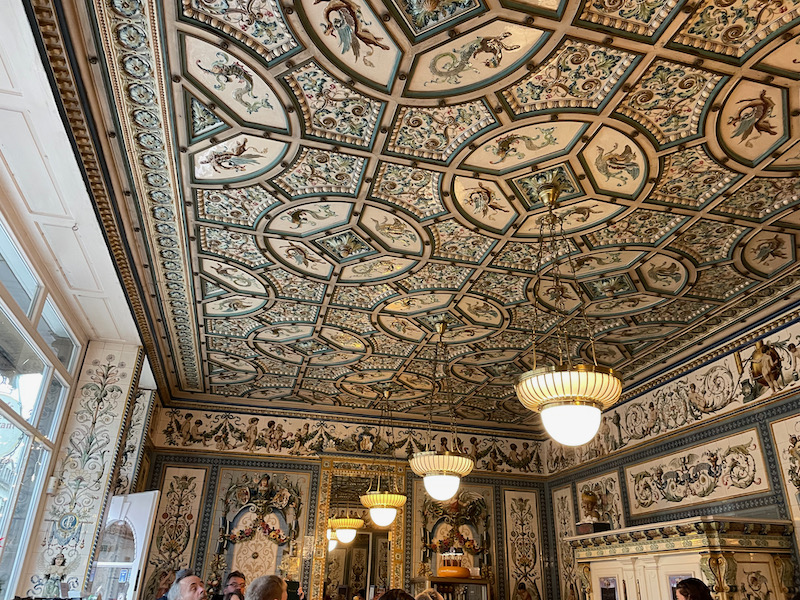
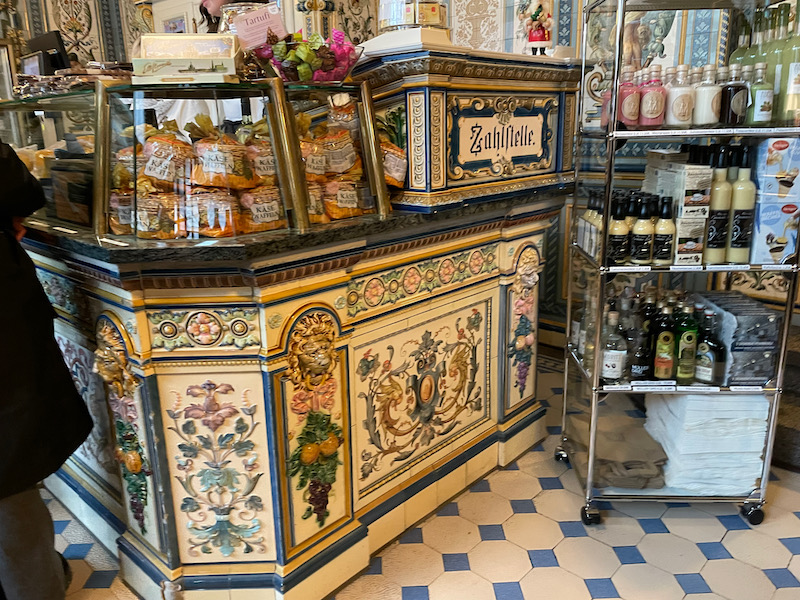
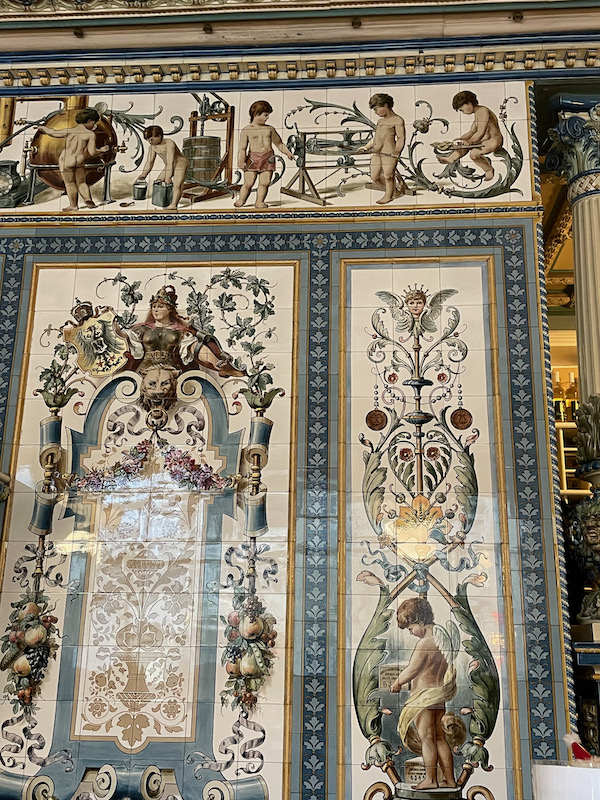
Here is a bit of an odd church ... the Dreikönigskirche or Three Kings' Church. The first mention of the church was in 1421 and it was located near the Golden Reiter statue. It was destroyed in the Great Fire and rebuilt in 1688 with the tower completed in 1730. But then Augustus the Strong wanted to create a new large boulevard to connect the castle with the "new town" and the church was in the way. So it was torn down and the king paid to rebuild it at this location. Unlike most churches, this one does not face East because the King wanted the main door to open onto his new boulevard. But only the tower and altar remained after the Bombing of Dresden during WWII. The church itself was not rebuilt until 1984 and the exterior was reconstructed to resemble the 18th century church as much as possible. But you can definitely tell a difference between the tower from 1730 (which looks black) and the very clean church.
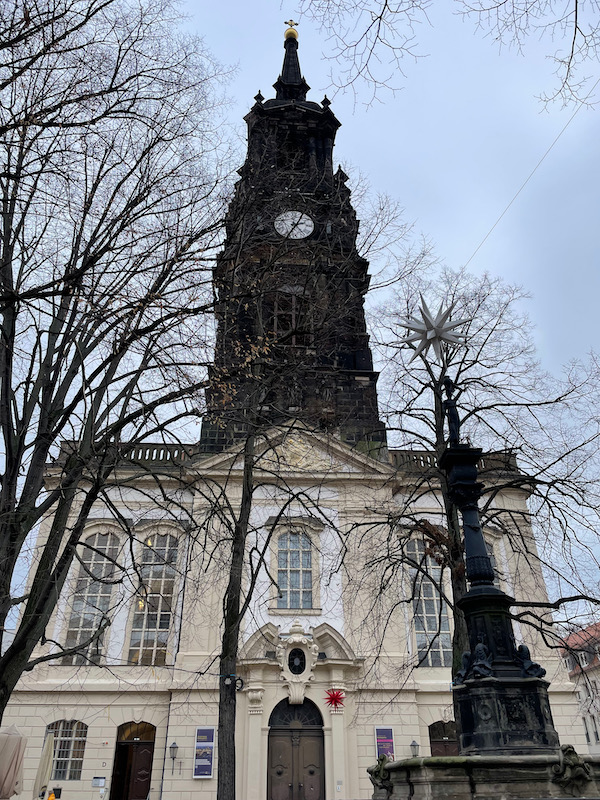
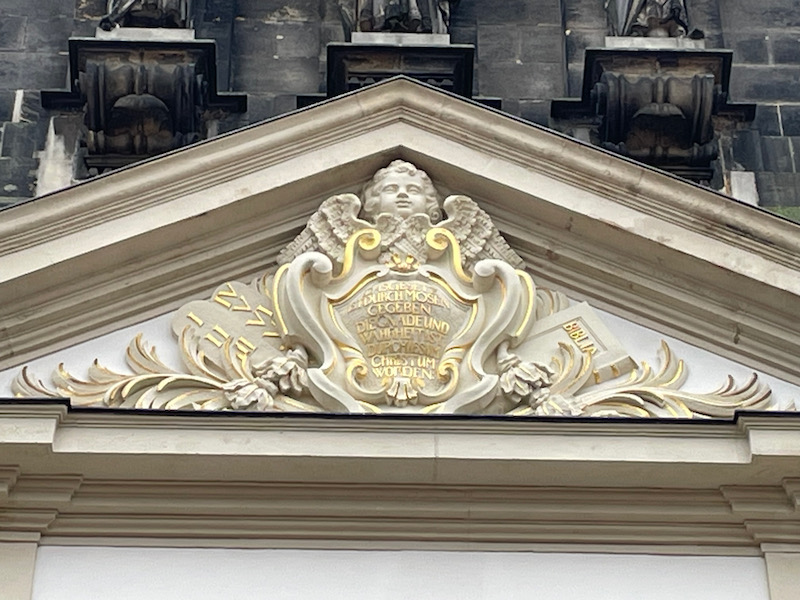
The interior was significantly modernized and so, in general, that that interesting. There were 3 interesting things. First, a sandstone relief created in 1534 called the "Dance of the Dead". Originally, it hung on the façade of the Georgentor (George's gate) of the Dresden Castle (you'll see this gate later). It is around 40 feet long and shows 27 people following behind the figure of death in a long, circling dance, according to their rank in the world. The first are clergymen, then the gentry with a kettledrum-playing figure of death, followed by females. At the end is another figure of death, this one holding a scythe in his hand.
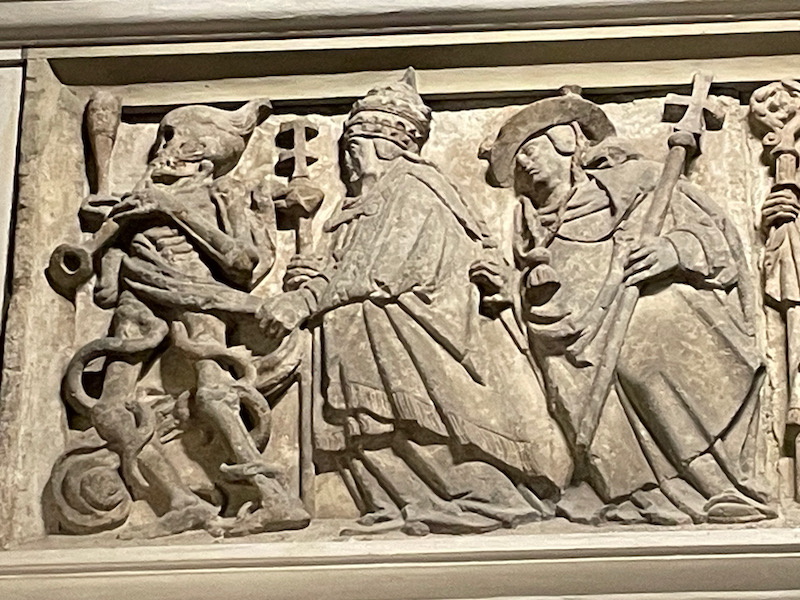
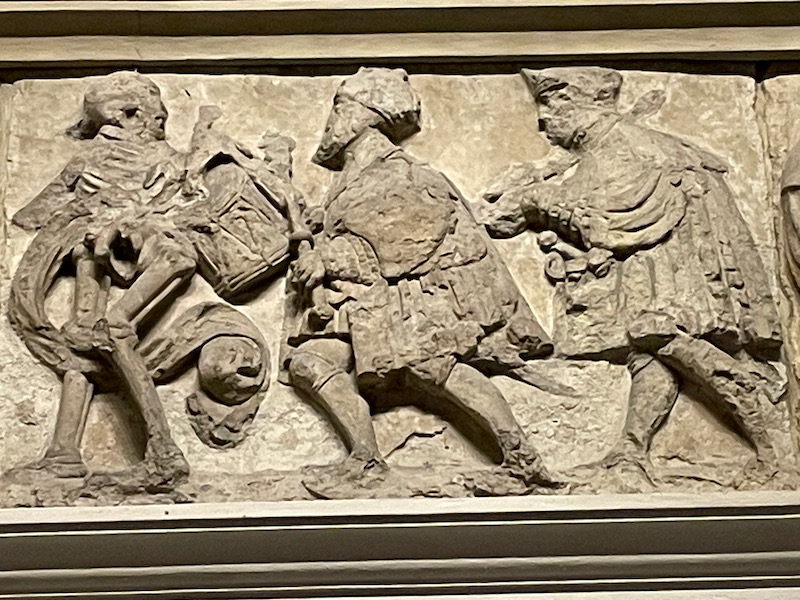
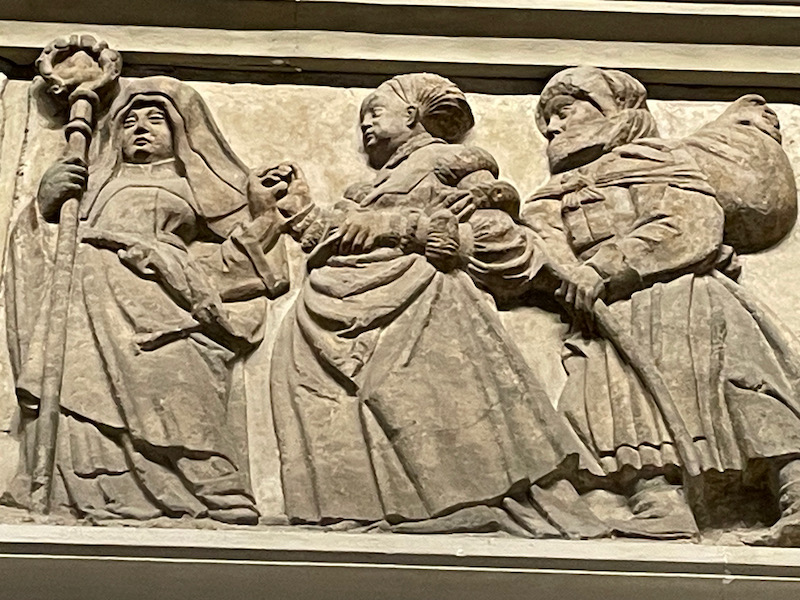
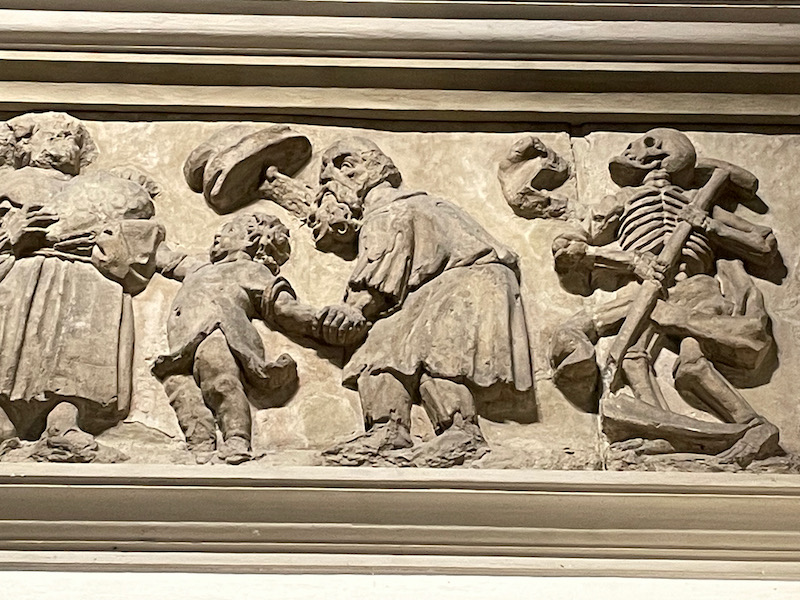
The main altar is carved sandstone, dating from 1739. Originally it was painted and partly gilded (you can see some of the gilding in the 2nd picture). The statues on either side represent the evangelists Matthew (with an angel) and John (with an eagle).
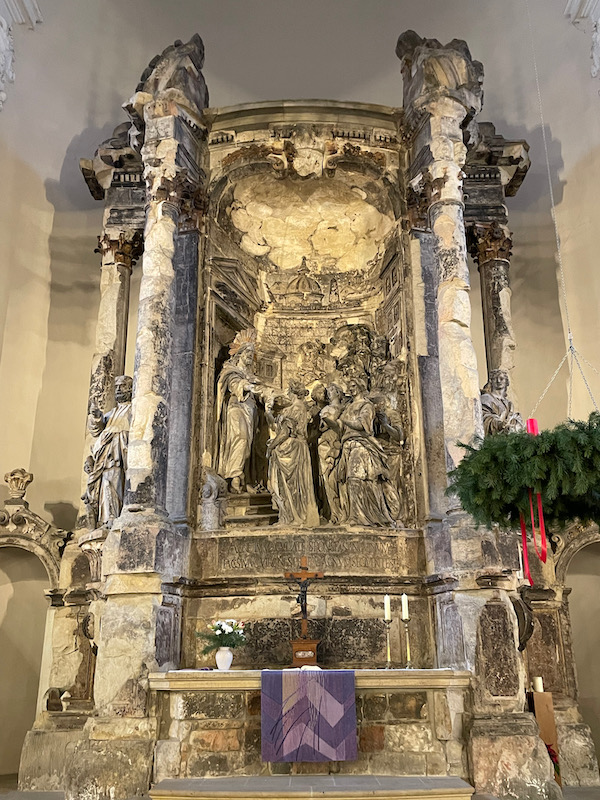
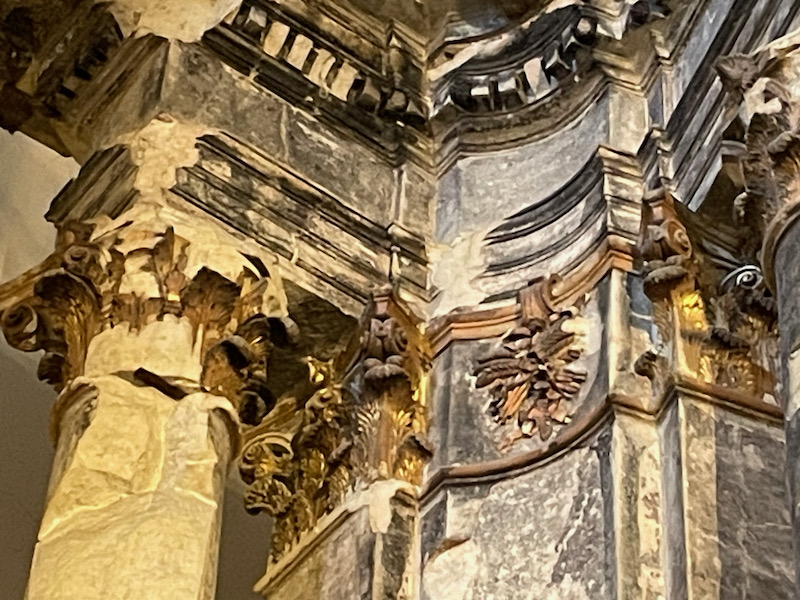
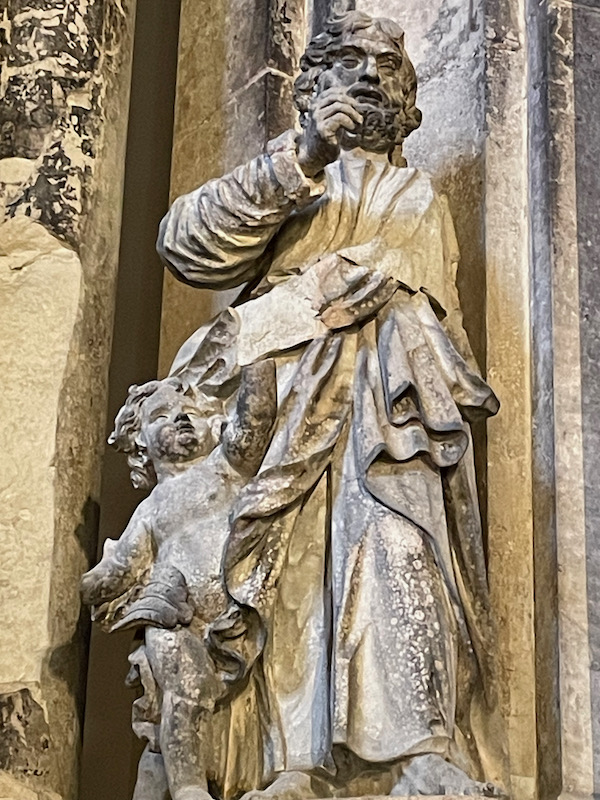
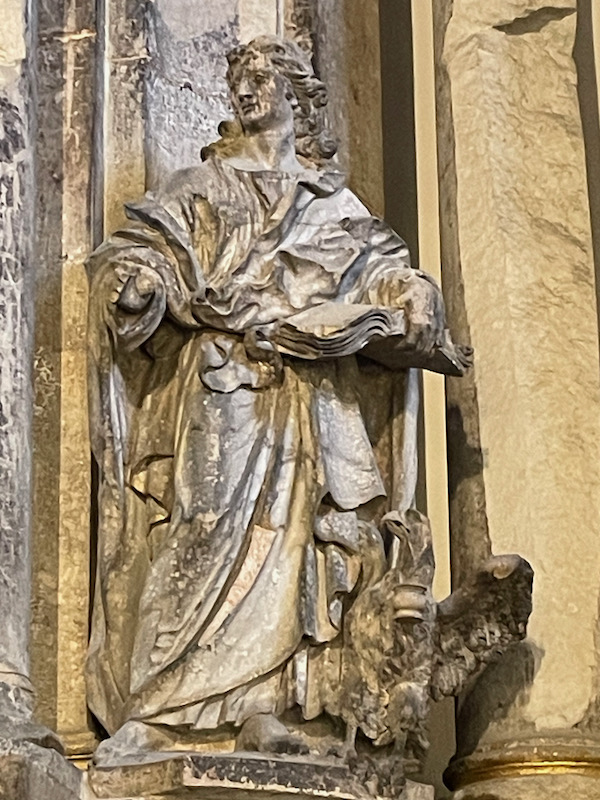
In the middle is a relief that depicts the parable of "The foolish and the wise virgins" in the Gospel of Saint Matthew.

There are 2 angels that, along with the altar and baptismal font, are the only pieces remaining from the 18th-century church that was torn down. Today, they hang on either side of the nave but previously, they were beneath the organ.
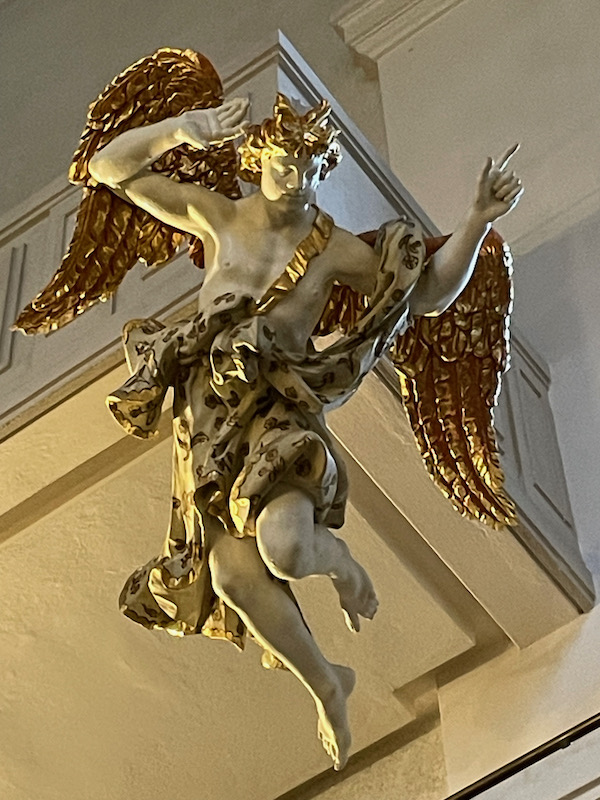
A few really interesting decorative elements on a couple buildings.
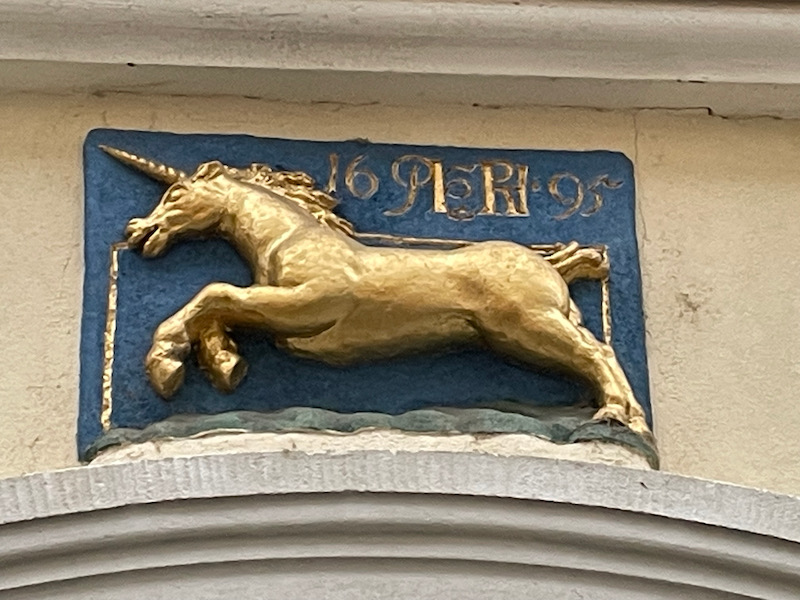
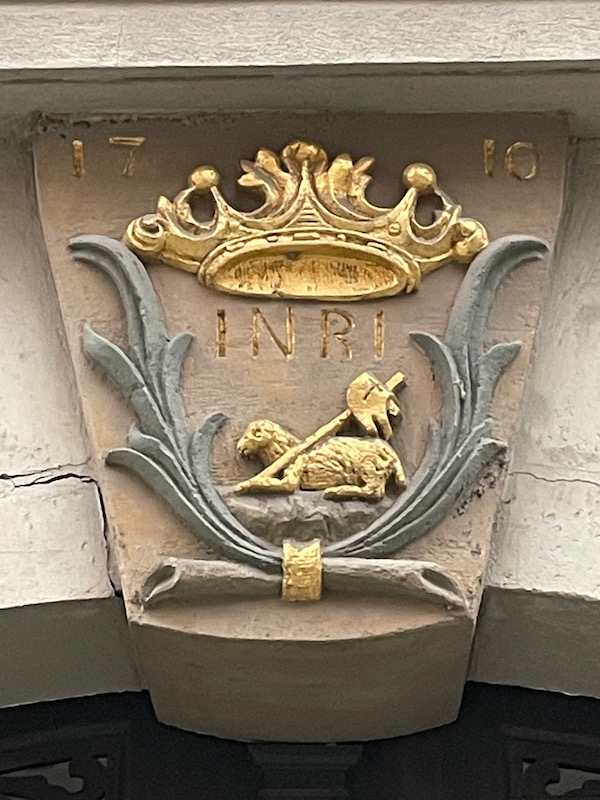
There are a lot of cities now with name-signs, this one was lit up for the festive time. Tom is next to the sign, so you can see how large the letters are. You can also see the Golden Rider statue, the ferris wheel, and the start of the Augustusmarkt Christmas market behind.
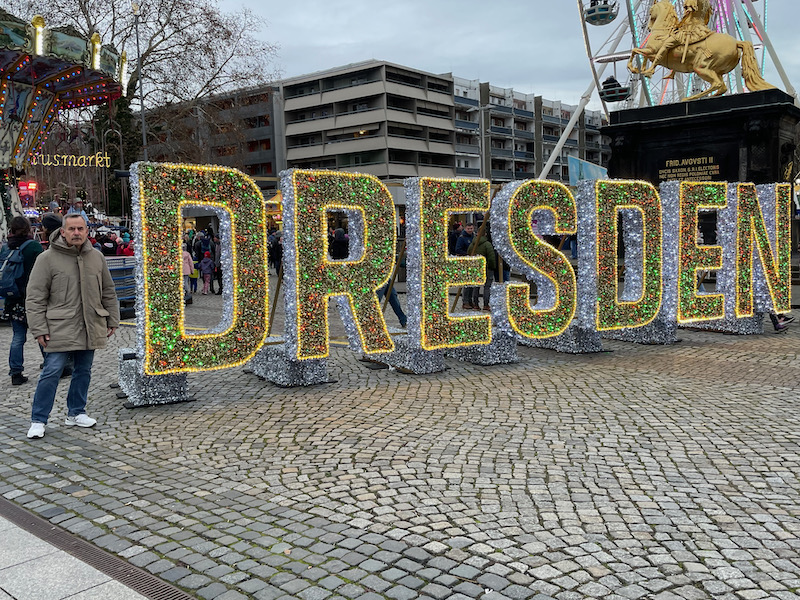
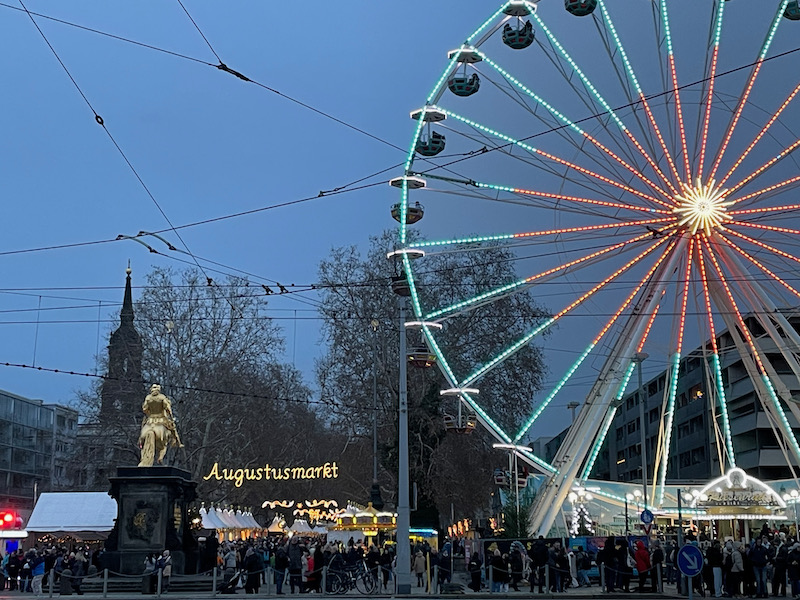
The Baroque-style Japanese Palace, built starting in 1714, currently houses 3 museums: Museum of Prehistory, Ethnological Museum, and Natural History Collections. It was originally planned to house the vast porcelain collection of Augustus II the Strong and he had wanted the roof the ceiling and walls to be made of porcelain. It never actually housed the collection, there are still elements of the plan, like the Japanese curved roof, the relief on the gable above the portal and statues around the courtyard and within the building. The building was completely destroyed in 1945 and restored in 1954.
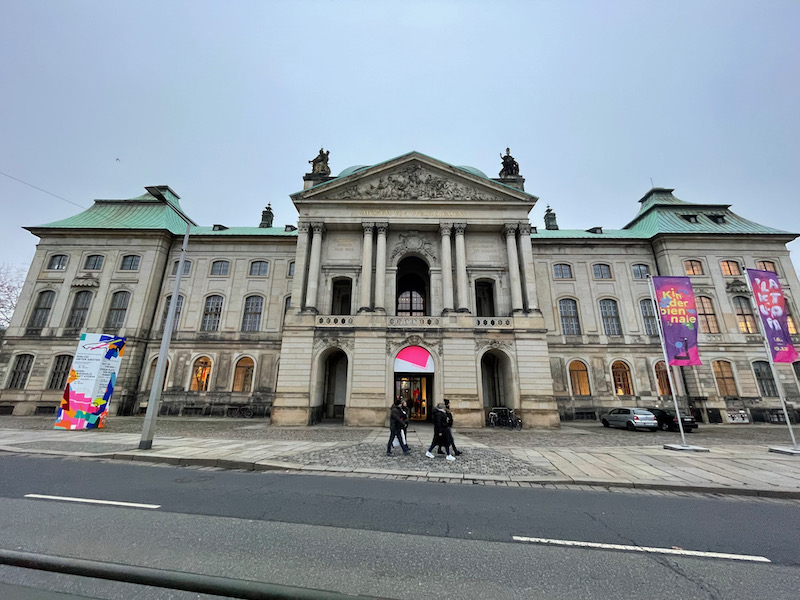
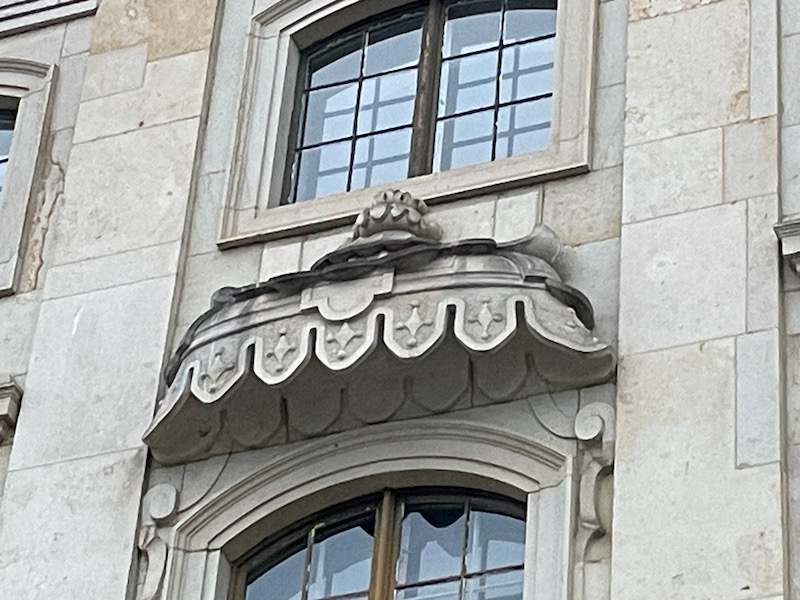
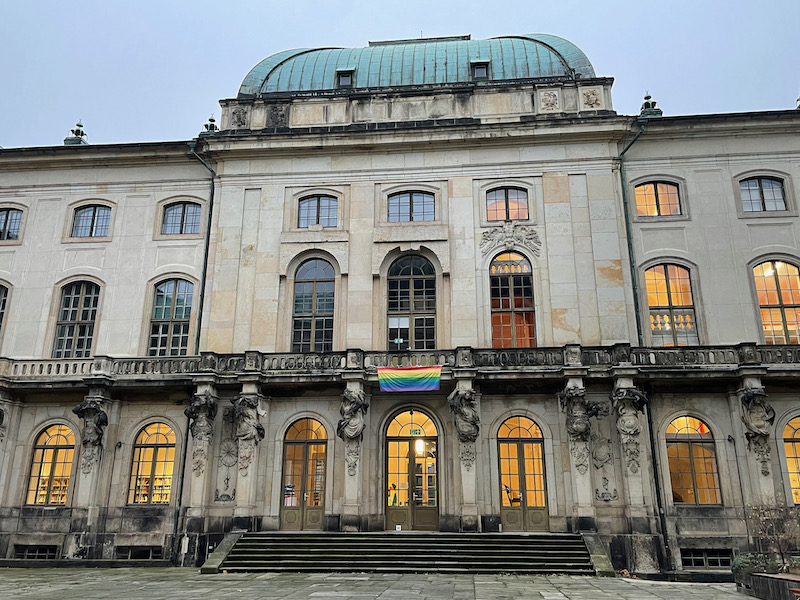
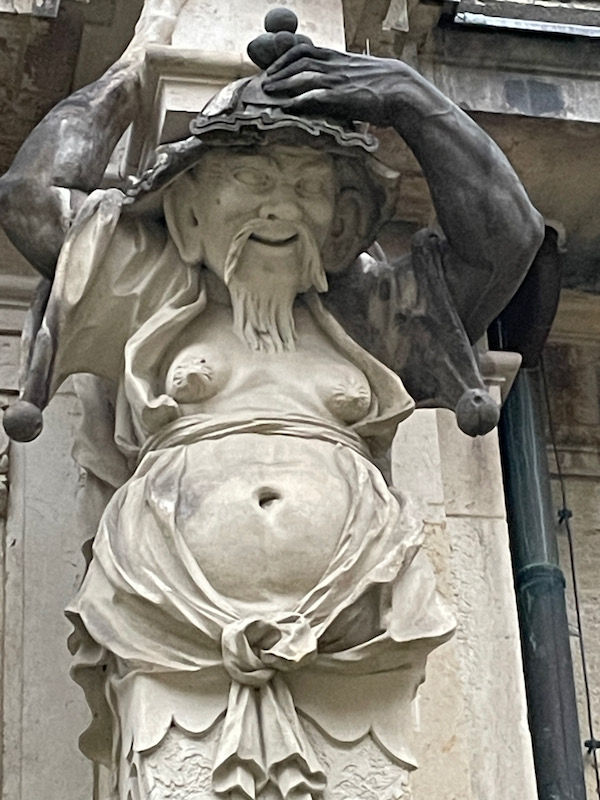
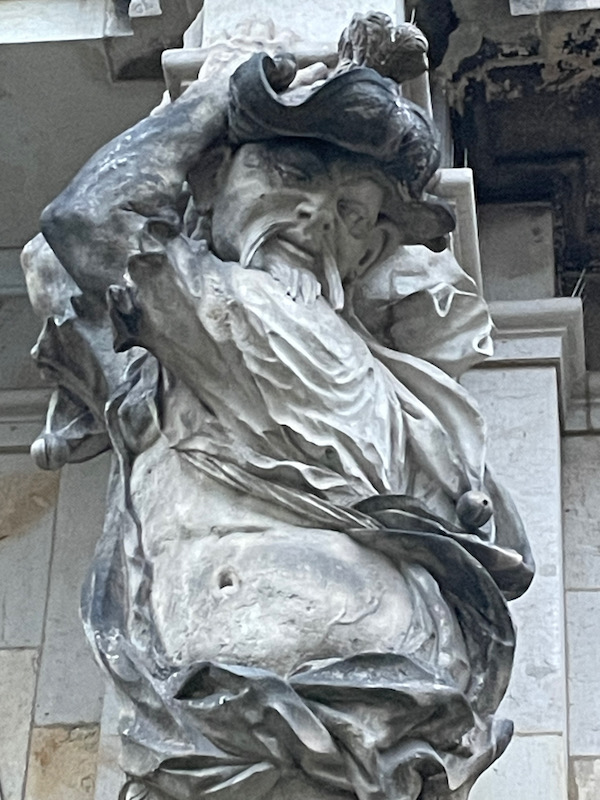

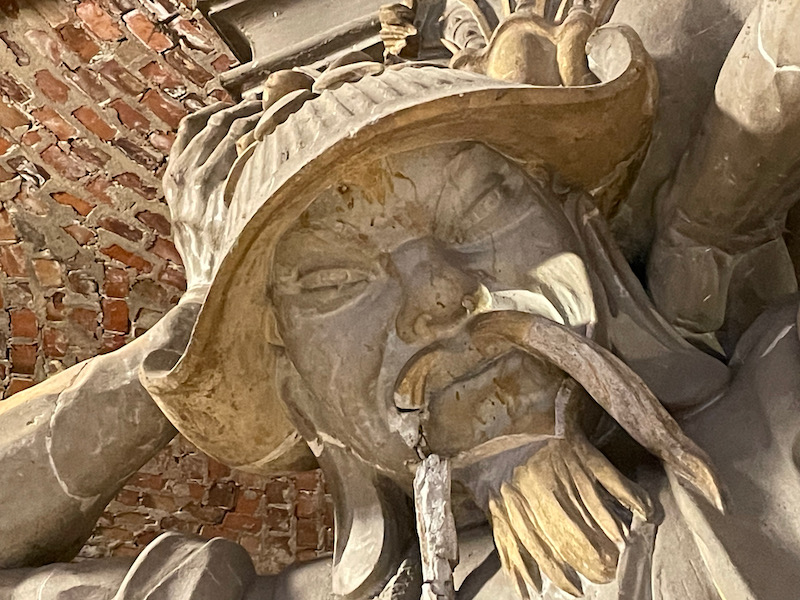
This is looking back across the river into the old historical center. The tallest building/tower is a Catholic Church and the building on the left of it and behind is the Georgentor (we will get closer, don't worry). The 2nd picture is the Dresden Academy of Fine Arts with a blue glass dome. The 3rd is the dome of the Frauenkirche and the last one is the Courthouse.
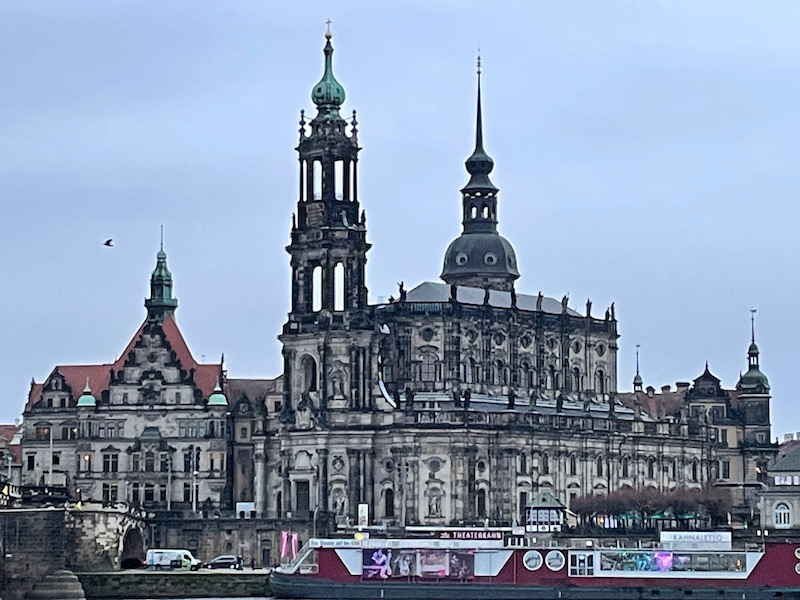
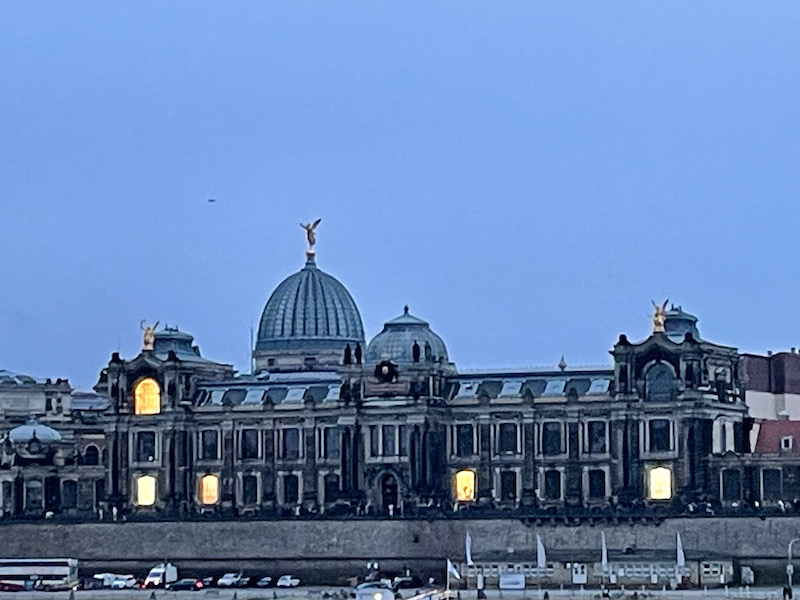
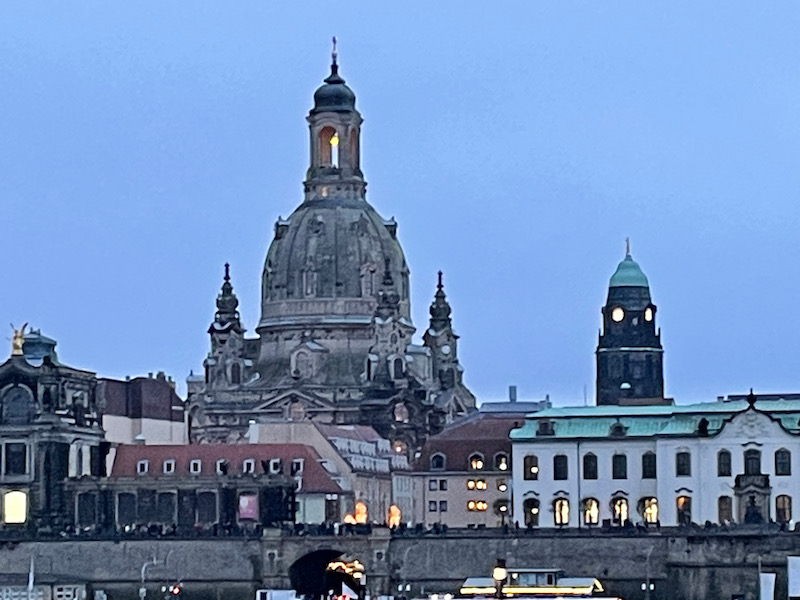
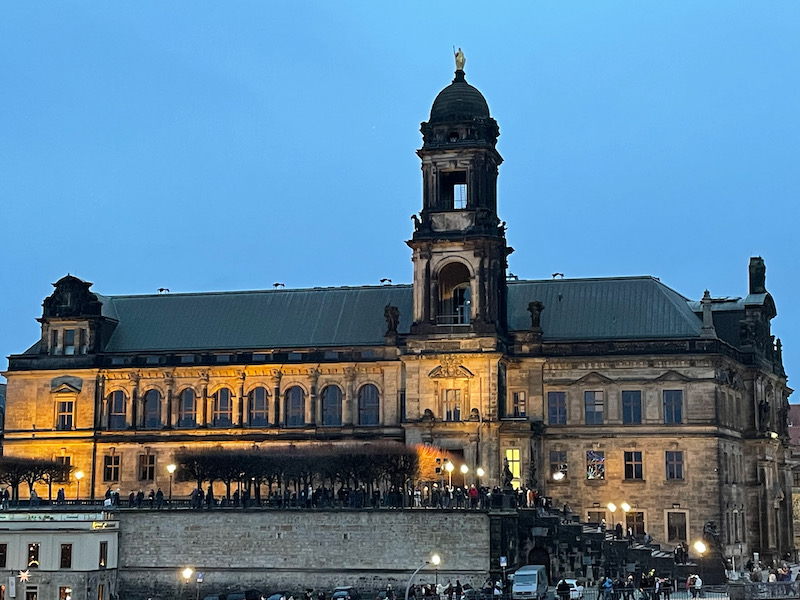
There was a singer on the bridge doing a not-too-horrible rendition of The Boxer by Simon & Garfunkel. You can also hear the wind going in the video.
Now we are back over on the historical side of the river with some of the same pictures .. the Georgentor, the Catholic Church, and then the Opera house (we will see this up-close during a guided tour on Day 3).
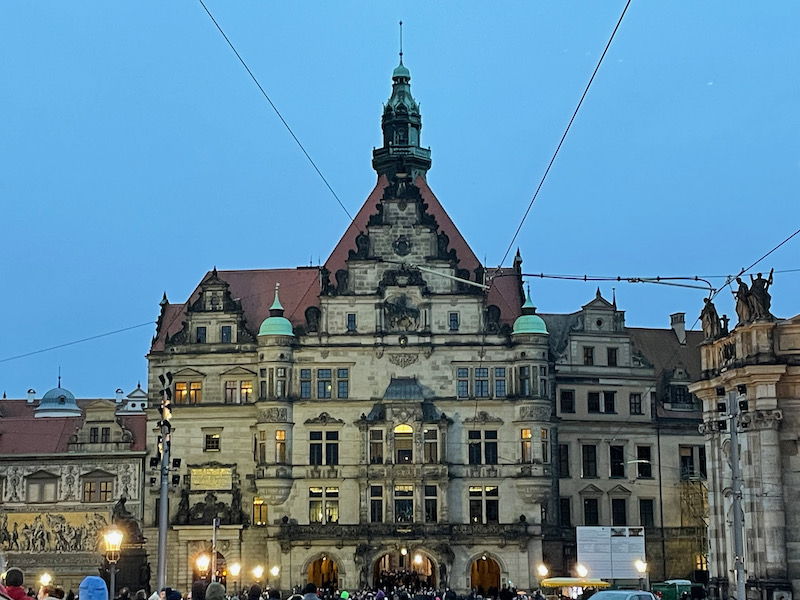
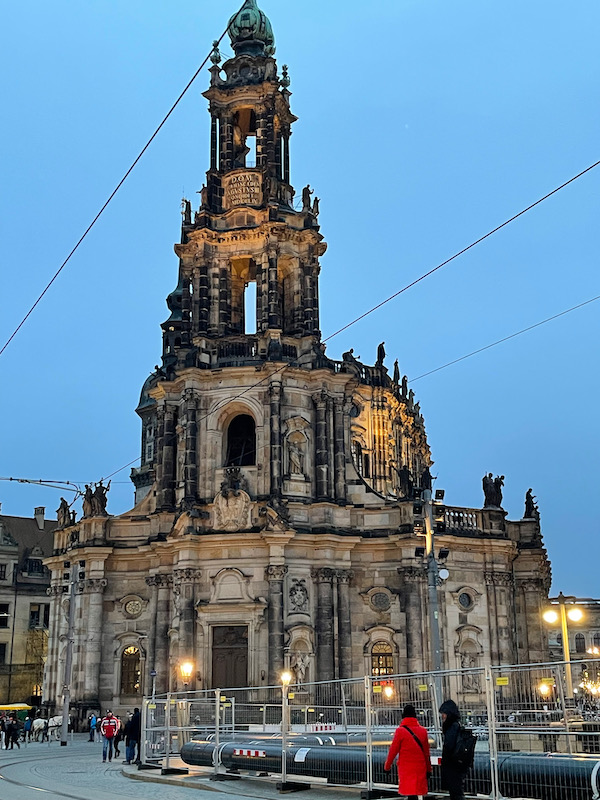
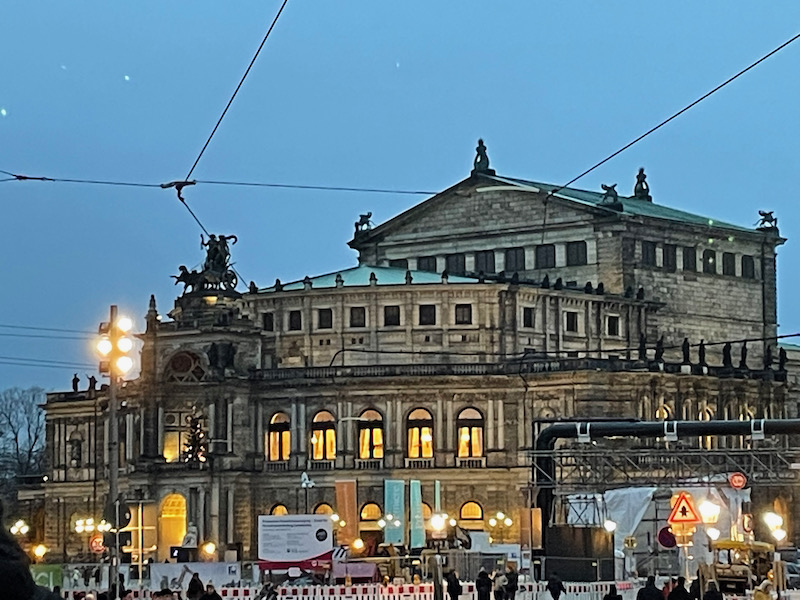
I don't normally do food pictures but we were specifically doing German/Saxon food during this trip. So in addition to eating lots of sausage in the Christmas markets for lunch, we also had a Thüringer Rostbratwurst at night (with sauerkraut) and Sauerbraten, the classic Germany pot roast with red cabbage and potato dumplings. We paired it all with some beer (Tom) and some local wine (Susan, who never developed a taste for beer).
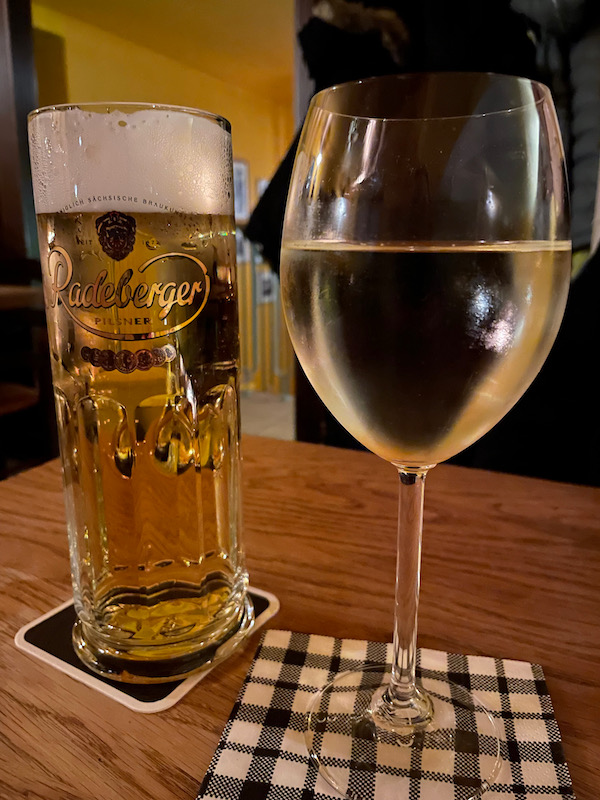
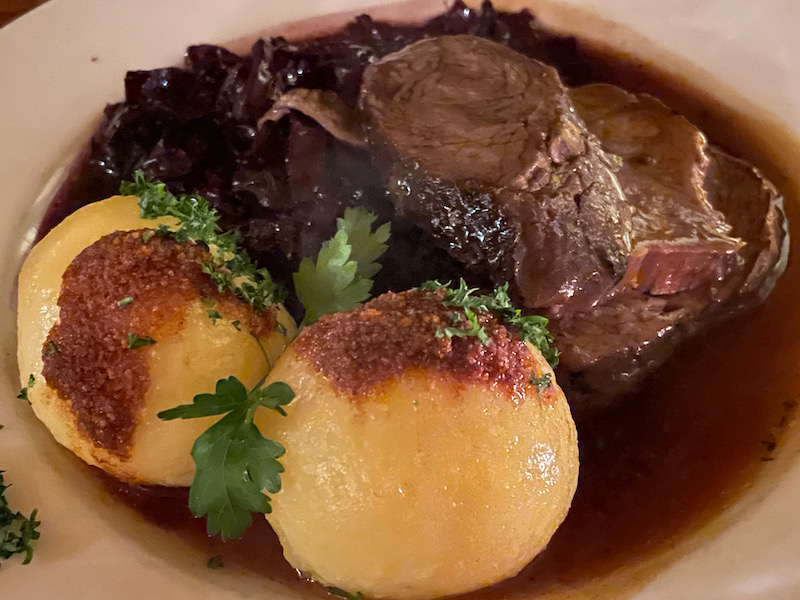
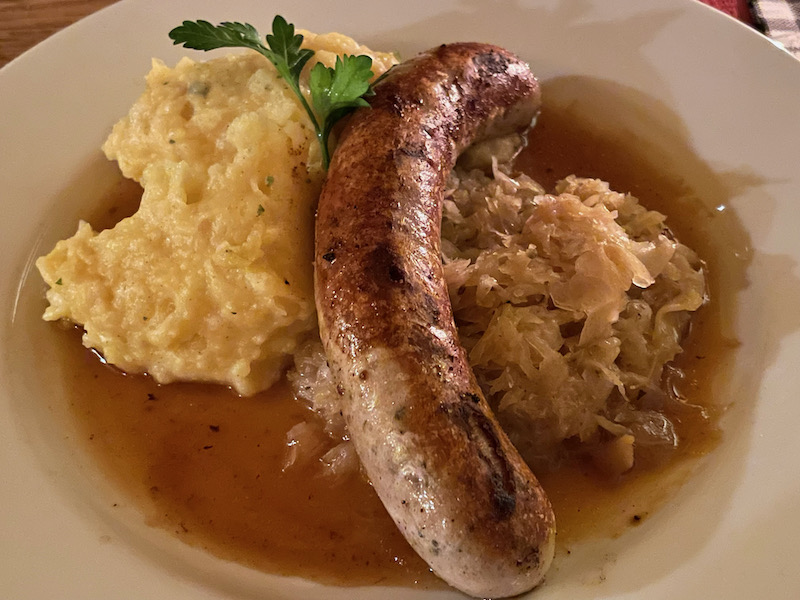
Pictures of the Striezelmarkt Christmas market at night. We will see it again during the daytime but I thought it looked really nice with the lights.
